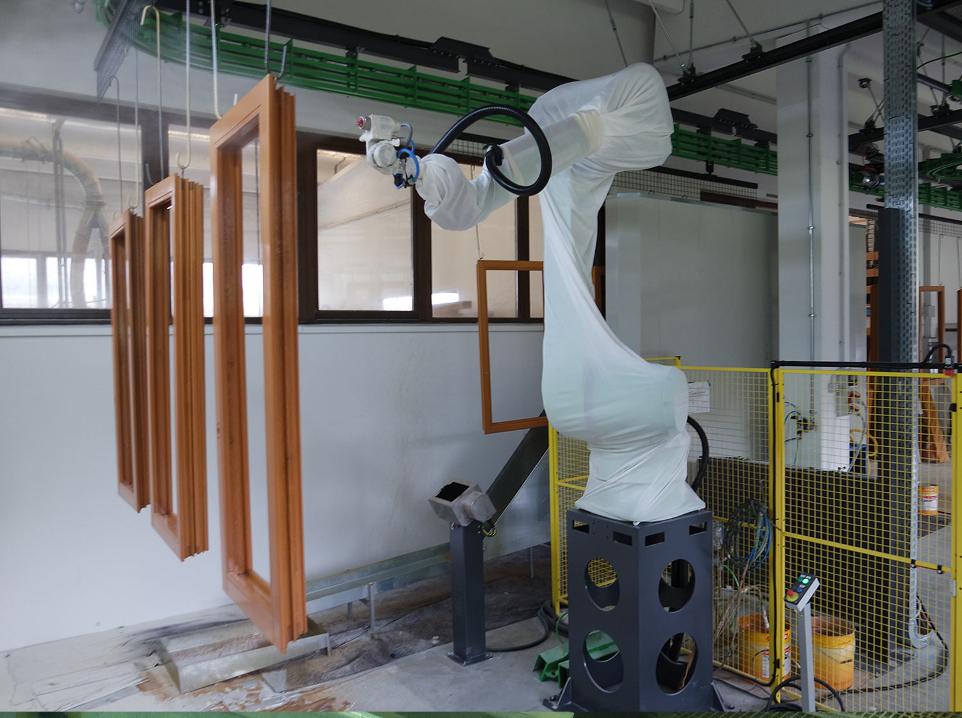Robotic painting Applications
Painting robots apply coatings with great precision and evenness. They are usually employed in a manufacturing environment. In particular, the automobile industry has used painting robots for many years. Over the last decade, the sophistication of painting robots has dramatically increased. And more applications have become possible.
Modern painting robots employ arms with six degrees of freedom. This means they can paint not only the outside of a car, but they can also reach inside, for example. In general, surfaces that are hard to reach manually can often be more easily accessed by robot painters. Also, complex parts with angular or curved surfaces can be painted or coated.
As the name implies, painting robots are most often used to apply paint. However, they can also be used to put on a variety of other coatings.
Some examples of various kinds of coatings include:
- anti-fingerprint
- antifog (for glass)
- water resistant
- sound-absorbing
- vibration damping
- anti-bacterial

Industries that Use Painting Robots
Painting robots are still relatively costly. So, the industries that use them typically manufacture a high volume of products, enabling them to achieve a rapid ROI. Or the products to be painted need a high-quality finish that justifies using the greater precision of a robot. Here are some of the types of manufacturers using painting robots:
- automobile
- glass
- aerospace and defense
- smartphone
- railroad cars
- shipyards
- office equipment
- household products
- other high-volume or high-quality manufacturing
Advantages to Painting Robots
The benefits of using painting robots include:
- Uniformity of coating - robots can move at a constant speed far better than a person and thereby ensure an even coating
- Precision of application - the robotic painting arm moves with great accuracy. The position of the robot will be much more precise and repeatable than with a human painter.
- Speed (as much as 30 times faster than manual methods)
- Keeping workers safe from harmful fumes and chemicals
- Reduced cost by minimizing the amount of wasted coating


Floor
Ceiling
Wall
Rail or Overhead Gantry
How Painting Robots are Mounted
Technologies Used to Apply the Coating
Painting robots use different methods of turning the paint or coating into a fine mist. This is important for an even application. Here are the most common technologies used:
- Air spray - a stream of air is mixed with the coating to break the fluid into fine droplets. Most common for paints.
- Ultrasonic spray - an atomization surface vibrates at an ultrasonic frequency. The coating hits the vibrating surface and is turned into a fine mist. Used to apply insulation and conductive films on small products. Other uses include anti-glare coatings, photoresist, and various coatings with special properties.
- Electrostatic - the coating fluid is charged with thousands of volts of static electricity in the nozzle. Electrostatic repulsion turns the liquid into a mist. The mist is attracted to the surface to be coated by an opposite electrical charge. With this method, an even coating can be applied to uneven surfaces. The efficiency is remarkably high, with little paint wasted.

To install this Web App in your iPhone/iPad press
![]() and then Add to Home Screen.
and then Add to Home Screen.









